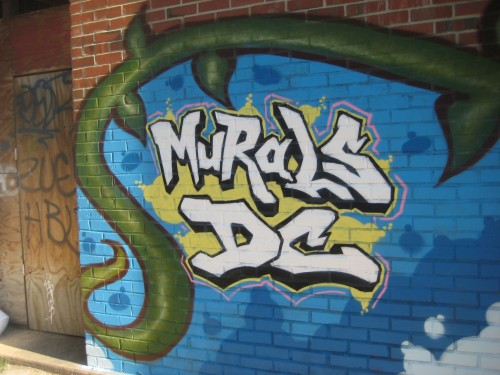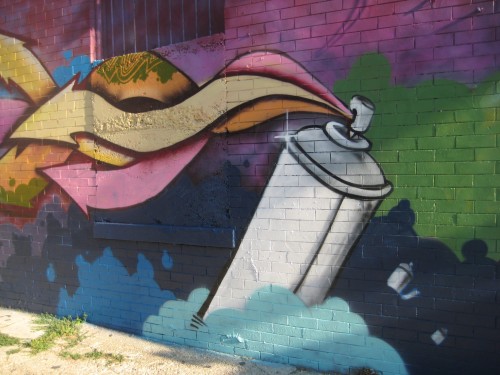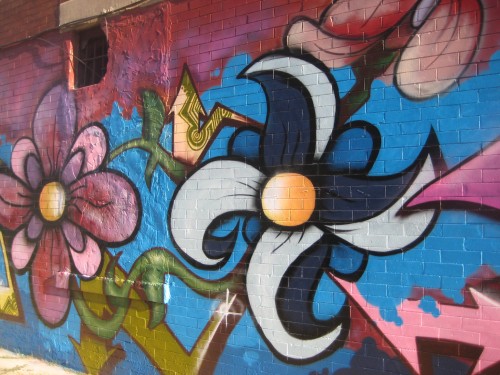Murals DC Piece at Fuller and 15th NW
The debate is fresh but the line seems to already have been drawn.
On one side, facing an uptick in tagging that has cost the city hundreds of thousands of dollars in removal fees this year alone, DC officials agree that illegal graffiti is criminal before artistic: “I appreciate art,” said Nancee Lyons of the Department of Public Works (DPW) at a panel discussion on the issue earlier this summer, “But if Picasso made a painting on the side of my house—it may be beautiful but if I didn’t ask him to do it it’s still vandalism.”
While the event—titled “The Art of Vandalism: A Closer Look at DC Graffiti”—featured an eclectic panel of experts on the art form, including a former graffiti artist, DC new brow art collector Philippa Hughes, a graffiti documentarian from Georgetown University, and Cory Stowers, Art Director at Words Beats Life (a hip-hop nonprofit), the debate still served as the official kick-off for the MuralsDC Project—the DC Commission on the Arts and Humanities’ answer to tagging.
Launched in 2007 in partnership with DPW, the program aims to “replace illegal graffiti with artistic works” and “promotes respect for public and private property as well as community awareness for the young people [involved].” According to the website, sites are chosen “in collaboration with the Department of Public Works’ assessment of areas with high incidents of illegal graffiti. Each mural reflects the character, culture and history of the neighborhoods in the District.”
But the character, culture and history according to whom? While the Commission has done an excellent job recruiting former (illegal) graffiti artists to weigh in on and even contribute murals, are these works authentic examples of artistic expression, or—as one angry audience member at the panel discussion declared—simply a means of censorship, or even propaganda?
As said by Jonna McKone in a recent (and brilliant) Washington City Paper piece on the District’s tagging debate:
In the eyes of community groups and government bodies, graffiti is crime. But a sociologist will tell you it has other functions: It’s an expression of identity. It’s about achieving recognition among peers, particularly for youth who feel marginalized. It’s about one-upping other writers. It’s about the thrill of tagging the most dangerous spots. It’s about saturation—repeating a tag or image until it punctures the public consciousness. Some tags are ugly, but they also having meaning. When graffiti is forced onto a piece of paper in a classroom or onto the walls of a corporate-funded art space, it doesn’t.
So what’s the answer? How do we curb vandalism yet foster not only the action of creation but the freedom of expression (dare I mention it, our first amendment right)?
Graffiti purists will balk (since illegality is part of the culture, arguably); but I think more so than the nine murals underway this year alone through the MuralsDC project, the answer is free walls. The answer is Garfield Park.
Stay tuned for part 2…
All photos by the author.



Pingback: We Fight We Die: How The Disenfranchised #Occupy » We Love DC